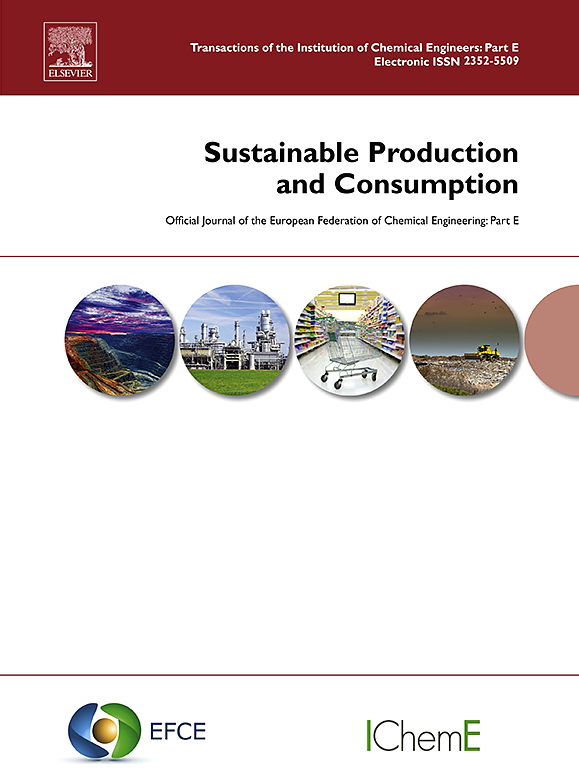评估消费品行业规模化增材制造的环境和财务绩效
IF 10.9
1区 环境科学与生态学
Q1 ENVIRONMENTAL STUDIES
引用次数: 0
摘要
随着企业可持续发展承诺和环境法规的加强,增材制造用户必须在该技术日渐成熟的经济价值与其应用和工艺相关的环境影响之间取得平衡。由于在规模上驾驭这种多维变化的方法有限,增材制造利益相关者在做出增长和投资决策时面临挑战。为了弥补这一差距,本研究将系统建模方法应用于体育用品行业快速成型制造服务单位的案例研究,该单位旨在改善其产品组合对经济和环境的影响,并扩展其能力。贸易空间模型比较了增材制造与注塑成型在产品特性和生命周期决策方面的价值,灵活的设计分析评估了增材制造扩展战略,同时考虑了市场和技术的不确定性。贸易空间分析表明,与注塑成型相比,增材制造可将 1 至 20 件产品的环境足迹降低 95%,单位成本降低 93%;与增材制造相比,注塑成型可将 100 至 50,000 件产品的环境足迹降低 72%,单位成本降低 56%。这项分析还表明,在低碳能源地区,以及在生产量极低或能最大限度提高制造能力的小零件时,快速成型制造的经济和环境价值都会增加。灵活的设计分析表明,一旦确认有更高的需求,将内部生产能力扩展到拥有可再生能源的更大设施,与维持目前利用外部服务局的运营相比,可减少高达 49% 的零件环境足迹,并将净现值提高 600% 以上。结果表明,这些系统建模方法具有在公司层面整合财务和环境影响评估的潜力,可用于战略扩展决策。建议在未来的模型开发中纳入增材制造对产品生命周期的独特设计影响、影响分析中更多的细微差别以及该技术可持续发展的社会因素。本文章由计算机程序翻译,如有差异,请以英文原文为准。
Evaluating the environmental and financial performance of additive manufacturing at scale in the consumer goods industry
As corporate sustainability commitments and environmental regulations intensify, additive manufacturing users must balance the technology's maturing economic value with its application- and process-dependent environmental impact. With limited methods to navigate this multi-dimensional variability at scale, additive manufacturing stakeholders face challenges when making growth and investment decisions. To bridge this gap, this study applies system modeling methodologies to a case study of an additive manufacturing service unit in the sporting goods industry aiming to improve its product portfolio's economic and environmental impacts and scale its capabilities. A tradespace model compares the value of additive manufacturing to injection molding across product characteristics and lifecycle decisions, and a flexible design analysis evaluates additive manufacturing scaling strategies, considering market and technology uncertainties. The tradespace analysis reveals that additive manufacturing reduces product environmental footprint by 95 % and unit cost by 93 % for 1-to-20-part production volumes compared to injection molding, while injection molding lowers environmental footprint by 72 % and unit cost by 56 % for 100-to-50,000-part production volumes compared to additive manufacturing. This analysis also suggests that additive manufacturing's economic and environmental value increases when located in geographies with low-carbon footprint energy and when manufacturing very low production quantities or small parts that maximize build capacity. The flexible design analysis indicates that expanding internal production capacity to a larger facility with renewable power, once higher demand is confirmed, can reduce part environmental footprint by up to 49 % and increase Net Present Value by more than 600 % compared to maintaining current operations that leverage external service bureaus. The results demonstrate the potential of these system modeling methodologies in integrating financial and environmental impact assessments at the company level for strategic scaling decisions. Future model developments are recommended to incorporate additive manufacturing's unique design impacts on the product lifecycle, more nuance in the impact analyses, and the social component of the technology's sustainability.
求助全文
通过发布文献求助,成功后即可免费获取论文全文。
去求助
来源期刊

Sustainable Production and Consumption
Environmental Science-Environmental Engineering
CiteScore
17.40
自引率
7.40%
发文量
389
审稿时长
13 days
期刊介绍:
Sustainable production and consumption refers to the production and utilization of goods and services in a way that benefits society, is economically viable, and has minimal environmental impact throughout its entire lifespan. Our journal is dedicated to publishing top-notch interdisciplinary research and practical studies in this emerging field. We take a distinctive approach by examining the interplay between technology, consumption patterns, and policy to identify sustainable solutions for both production and consumption systems.
 求助内容:
求助内容: 应助结果提醒方式:
应助结果提醒方式:


